How to Identify And Treat Hair Transplant Infection
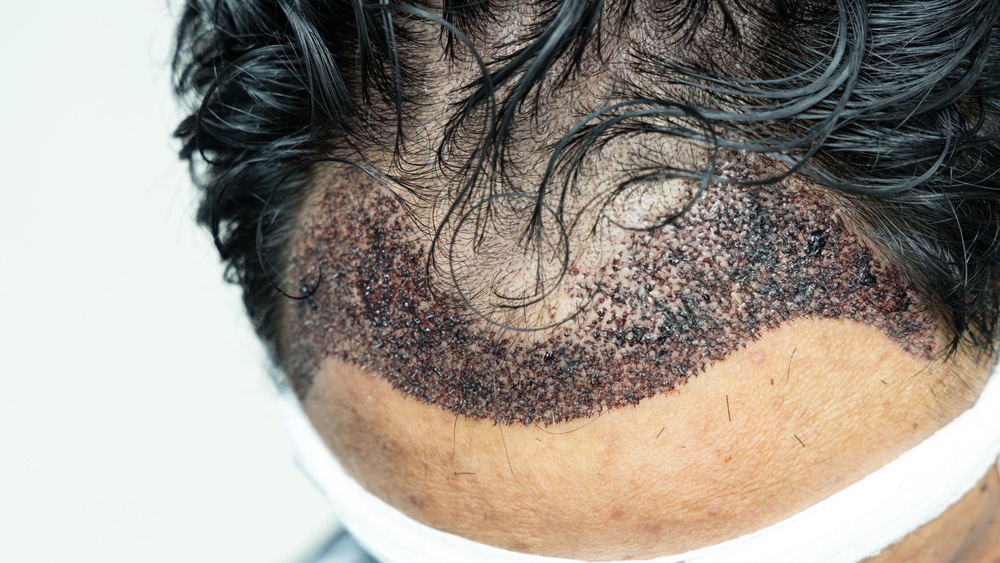
Hair transplant infection symptoms affect less than 1% of patients.
While hair transplants are generally safe, all surgical procedures carry some risks — including infection. However, effective preparation and care can help to prevent most complications.
But it’s important to consider potential side effects if you plan to undergo hair restoration.
And in this post, we’ll explore the symptoms, causes, treatments, and other risks so you can make an informed decision.
What are the symptoms of an infected hair transplant?
An infected hair transplant may cause the following symptoms:
- Swelling after hair transplant
- Pain
- Burning or warm sensations
- Abscesses
- Pus flow
- Redness or discolouration
- Itchiness
- Bleeding
Swelling or bleeding is normal, so shouldn’t cause concern in isolation. But if symptoms become worse or last for more than seven days, it’s possible that you have developed an infection.
In this case, you could notice further signs of infection after hair transplant:
- Swollen lymph nodes
- Nausea
- Vomiting
- Feeling fatigued or lethargic
- Headaches
- Fever
Speak to your surgeon if you present any of these symptoms after your treatment.
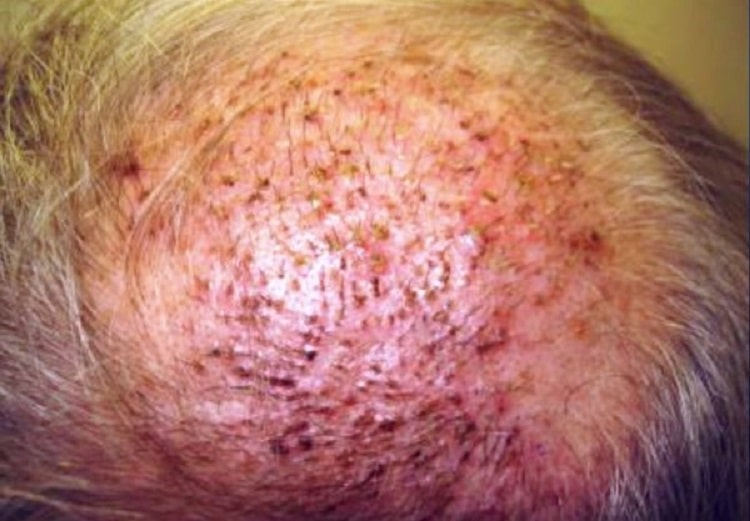
Why do some patients develop hair transplant infections?
One study found that scalp infections are typically not serious when they occur (which is rare).
The scalp is home to a substantial system of blood vessels that enable the immune system to identify and locate pathogens quickly.
But what causes the infection in the first place?
Bacteria penetrates open wounds on the scalp, either where the donor follicles are removed or implanted. Here are three of the most common ways that can happen:
Poor hygiene and unsanitary surgical environments
You could develop an infected hair transplant if a surgeon uses unsanitized tools or performs the procedure in a clinic with poor hygiene standards.
You may cause the infection yourself if you touch your scalp wounds while they heal, as bacteria can transfer from your fingertips to the treatment sites. In either case, the result is a hair transplant gone wrong.
Weakened immune system
An underlying medical condition could weaken your immune system and increase your likelihood of an infection. Common issues include:
- Smoking
- Extreme obesity
- High blood pressure
- Diabetes
- HIV
- Malnutrition
- Cancer
Speak to your hair surgeon if you believe you could be affected by any of these.
Severe crusting
It’s normal for scabs and crusts to form on your wounds after hair transplantation. But severe crusting or scabbing can lead to itchiness — and that may compel you to scratch your scalp.
You could inadvertently remove crusts and transfer bacteria to your open wounds, increasing your risk of infection.
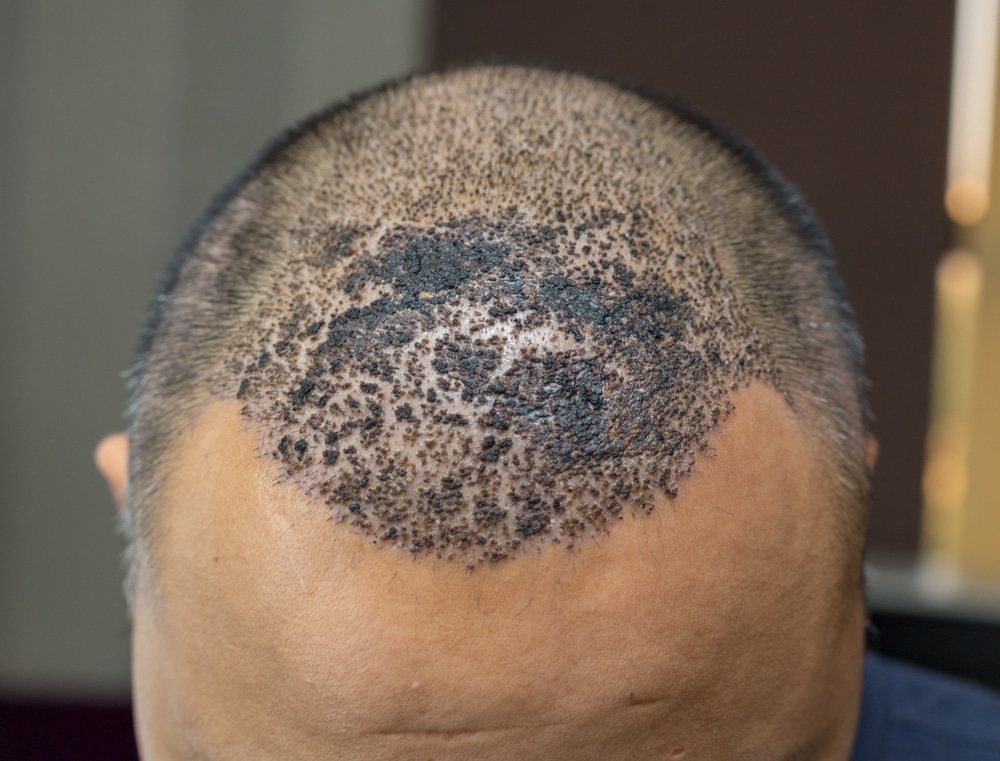
What are the long-term dangers of an infected hair transplant follicle?
A post-treatment infection can increase your risk of developing severe scarring that disrupts your results, such as creating inconsistent regrowth around the scars.
But infection can lead to more dangerous issues without treatment. In extremely rare situations, it could even cause septicemia followed by sepsis — a life-threatening condition known to trigger organ failure.
That’s why it’s crucial that you visit a doctor if you notice any signs of an infection, no matter how minor they may appear to you initially.
How do risks differ based on the transplant procedure?
Infections can develop in two areas of the scalp:
- Where the surgeon removes the follicles
- Where the surgeon implants the follicles
But the technique used may determine your likelihood of developing an infection.
The two most common methods are FUE and FUT hair transplantation.
During FUT, a surgeon takes a strip of skin from the back of the head to harvest its follicles. But FUE involves extracting follicles from the scalp one at a time instead.
FUT could, theoretically, bring a higher chance of infection as it creates a bigger wound, which could be more difficult to protect against bacteria.
But both techniques rarely lead to infection when a surgeon performs them correctly and safely.
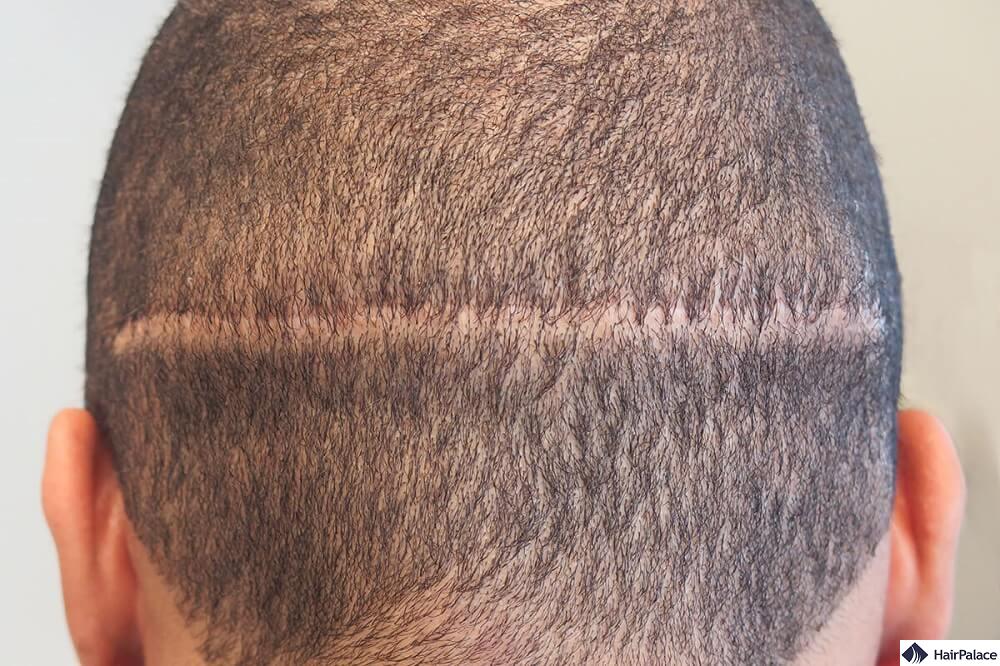
What treatment is available for hair transplant infection cases?
Reach out to your surgeon immediately if you suspect your scalp has become infected.
They’ll perform a comprehensive examination and, if necessary, provide you with a treatment plan.
They may recommend antibiotics (taken orally or with topical application), as well as antibacterial shampoos.
If you have abscesses on your scalp, your surgeon might drain them to help you heal.
How can you reduce your risk of an infection?
Follow these steps to minimize your likelihood of developing an infected hair follicle after hair transplant:
- Choose a licensed clinic with positive patient reviews and strict hygiene rules
- Avoid heavy exercise until your surgeon says it’s safe
- Visit your surgeon for all follow-up appointments as required
- Don’t touch your wounds or scratch at crusts or scabs
- Avoid tobacco and alcohol during recovery
- Follow all instructions your surgeon provides before and after your procedure
Make sure any hair clinic you choose for your treatment offers quality aftercare, including check-ups to monitor your progress.
What other side effects can hair transplants trigger?
Some patients may experience these side effects:
Shock hair loss
This condition causes hair to fall out in the donation area (where the surgeon harvests follicles).
It’s believed that microtrauma and stress related to the treatment are to blame.
However, the majority of patients who experience shock hair loss recover fully within three or four months of their treatment.
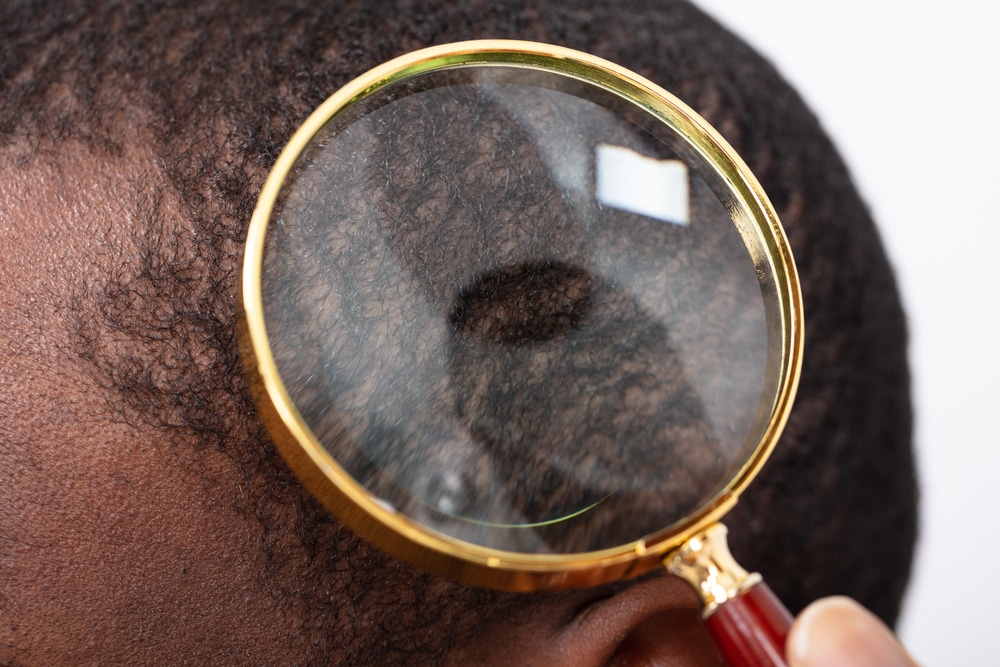
Folliculitis
Folliculitis occurs when hair follicles become inflamed. Noticing red bumps after hair transplant surgery is a telltale sign of this condition.
It causes red bumps, similar to acne, to appear on the scalp within a few weeks or months of treatment.
Possible contributing factors include ingrown hairs or bacteria infecting follicles.
When the latter is believed to be responsible, the condition is known as “bacterial folliculitis”. But the majority of cases are “sterile folliculitis”, as no specific bacteria is involved.
Scarring
The latest transplantation technologies and techniques lead to incredible results. New growth should appear natural, and seamlessly blend with existing hair.
But excessive scarring can cause patchy regrowth in one or more areas.
Numb scalp
Numbness is typically a temporary side effect. The scalp may also tingle when numbness occurs as nerves recover from the procedure.
Common effects related to healing
You may develop some or all of the following symptoms as your scalp heals:
- Scabbing or crusting
- Discomfort
- Redness
- Itchiness
Your surgeon should let you know if you can expect any other effects while healing.
When should you consult a doctor?
It’s rare for patients to experience serious side effects after a hair transplant, but be prepared to call your doctor straight away if you notice symptoms.
The sooner they organise treatment, the lower your risk of developing a dangerous infection or related issues.
Hair transplant infected follicles can typically be treated easily if you get treatment at the earliest possibility.
Conclusion
Hair transplant infections can occur due to poor surgical hygiene, improper post-operative care, or contamination, with symptoms including redness, swelling, pain, pus, and fever.
Treatment typically includes antibiotics and medical attention to prevent complications like scarring and graft failure.
Prevention involves ensuring a sterile surgical environment and following post-operative care instructions.
One of the simplest ways to avoid infection is to visit a reputable clinic with a strong history of outstanding results.
HairPalace surgeons use cutting-edge transplantation techniques to restore hair with completely natural, lasting results.
Hair Transplant Infection FAQ
Doctors may prescribe topical or oral antibiotics to target bacteria responsible for infections. Surgeons could advise patients to use antibacterial shampoo, or they may drain pus from abscesses to encourage healing and recovery.
Poor hygiene is the main reason why some patients may develop an infection after hair transplant surgery. The donor and recipient sites should be cleaned thoroughly to minimise risk, while treatment rooms must be sterilised.
Swelling, excessive redness, and discomfort are three of the most obvious symptoms of a post-transplant infection. Bleeding may also occur. In general, if the side effects of the procedure appear to get worse after several days instead of getting better, it’s possible that the scalp is infected.
The scalp may feel sore after hair transplant surgery, and patients might need medication to ease their discomfort and reduce the likelihood of infection.
Last medically reviewed on October 31st, 2025
- Garg, Anil K., and Seema Garg. "Complications of Hair Transplant Procedures—Causes and Management." Indian Journal of Plastic Surgery 2021; 54(04): 477-482https://doi.org/10.1055/s-0041-1739255
- K. Eustace, V. Jolliffe, A. Sahota, K. Gholam, Cutaneous Mycobacterium abscessus infection following hair transplant, Clinical and Experimental Dermatology, Volume 41, Issue 7, 1 October 2016, Pages 768–770https://doi.org/10.1111/ced.12900
- Kerure AS, Patwardhan N. Complications in hair transplantation. Symposium: Hair in Derm. 2018;11:4http://dx.doi.org/10.4103/JCAS.JCAS_125_18


